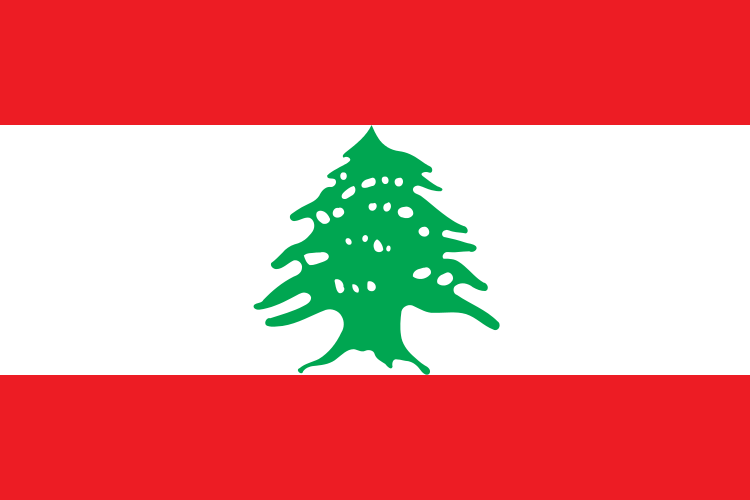Historical Backdrop:
The emergence of the Lebanese flag coincided with a pivotal juncture in the nation's narrative, a period marked by an ardent pursuit of liberation from French colonial dominion. Lebanon had remained under the sway of French mandate since the cessation of World War I. By the mid-20th century, an unwavering fervor for self-determination and autonomous governance had taken firm root within the Lebanese populace.
Symbolism Woven in Colors:
Each hue within the Lebanese flag embodies a profound symbolism:
- Red: The crimson swath atop the flag's canvas stands as a poignant tribute to the Lebanese people's unwavering sacrifices etched across the annals of history. It serves as an emblem of their unyielding resolve, determination, and their willingness to shed blood in pursuit of freedom and self-governance.
- White: The pristine white segment represents a nuanced amalgamation of purity, tranquility, and a profound longing for unity amidst the diverse tapestry of Lebanon's religious and ethnic mosaic. It mirrors the nation's yearning for serene coexistence and acceptance, underscoring the importance of solidarity within a harmonious society.
- Green: The verdant lower band is an ode to Lebanon's fecund landscapes, its intrinsic natural allure, and an optimistic harbinger of a future brimming with prosperity. This expanse of greenness encapsulates the heritage of agriculture and resonates with the essence of resourcefulness and growth inherent to the land.
The Emblematic Cedar Tree:
Nestled boldly within the heart of the white expanse, the cedar tree assumes a role of profound symbolism deeply intertwined with Lebanon's essence:
- Might and Tenacity: The towering cedar stands as an embodiment of strength and resilience, an unwavering sentinel weathering the ages. It mirrors the Lebanese spirit, illustrating their ability to surmount adversities and conquer challenges with unyielding determination.
- Ancestral Legacy: With roots reaching deep into antiquity, the cedar's historical and religious importance resonates through time. Revered in texts such as the Bible, it has transcended the epochs, adorning ancient structures and serving as a versatile resource.
- Cultural Identity: The cedar's prominence signifies a tether to Lebanon's historical lineage, an emblematic attachment to the land's legacy, and a poignant representation of the nation's distinctive cultural heritage.
Fostering Unity and Identity:
The flag's intricate composition, characterized by its vibrant palette and potent symbolism, aspires to weave a tapestry of national unity and collective identity. The fusion of colors and the presence of the cedar tree articulate a narrative of shared history, values, and ambitions. This amalgamation nurtures a sense of belonging and pride within the hearts of Lebanon's citizenry.
Aftermath of Independence:
The flag's formal adoption in 1943 concomitantly marked Lebanon's assertion of sovereignty, firmly entrenching its significance within the trajectory of nation-building. A rallying emblem for the Lebanese populace during a momentous epoch, it stands as a testament to their indomitable spirit and pursuit of self-governance.
Global Emblem of Identity:
The flag of Lebanon extends its reach across borders, universally recognized as the emblematic insignia of the nation. It unfurls at official ceremonies, adorns embassies, and graces international gatherings, symbolizing Lebanon's autonomy and its indomitable place within the global tapestry.
In summation, the flag of Lebanon eclipses mere fabric, metamorphosing into a vessel of history, resilience, cultural diversity, and soaring aspirations. A harmonious fusion of colors and symbols narrate an intricate tale of sacrifice, unity, fortitude, and optimism, thereby rendering it a poignant and resonant emblem for the Lebanese populace—a visual embodiment of their shared identity and a herald of their collective dreams.
Last Updated on: June 11, 2025